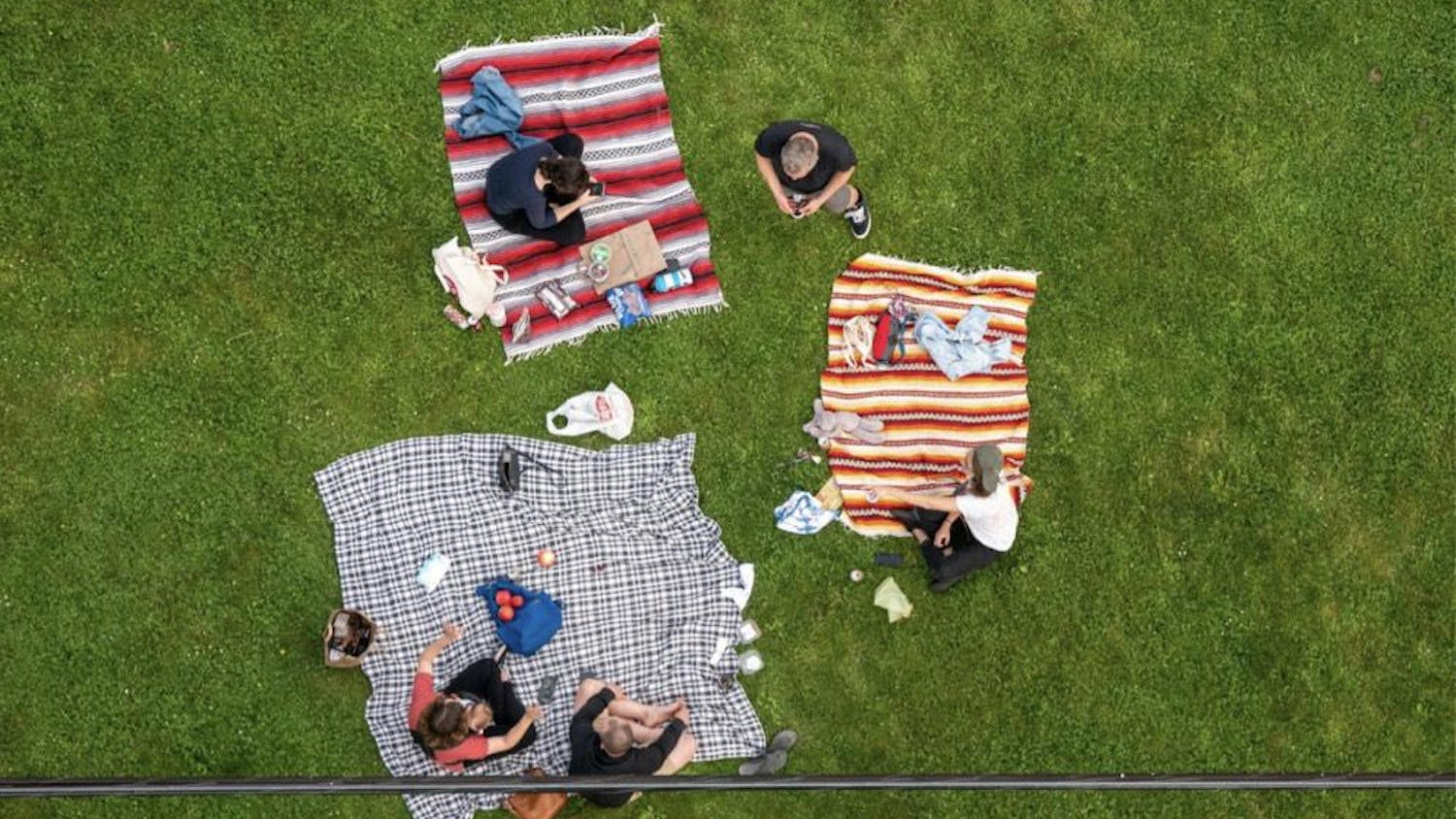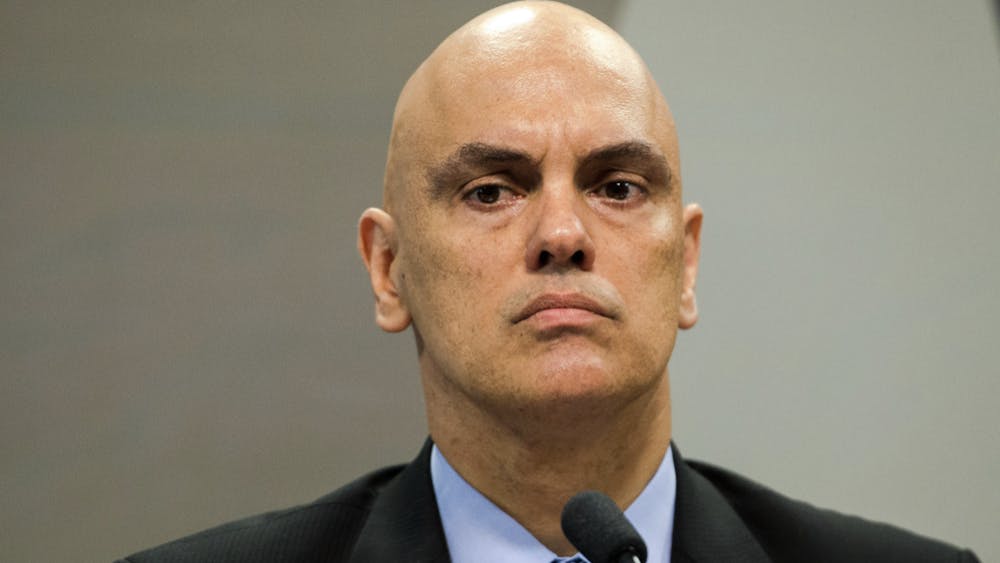I’m not sure whether it’s the warm allure of my bed or my tendency to leave my desk to gossip with my roommates, but trying to do any work at my apartment has become a pretty hopeless endeavor. So, to write this column, I have braved the 12-degree South Bend weather to drive three minutes to Duncan Student Center. It’s a cold day, so nearly everyone I pass is donning a heavy, knee-length parka. And as I’m walking, I play a little game in my head that I’ve been playing since my first year a Notre Dame — I take note of how many people are wearing a Canada Goose coat.
I had never even heard of Canada Goose before I came to Notre Dame, so when I learned that dozens of my classmates were packing themselves into $1,000 parkas — intended for explorations in the Arctic — to walk to DeBartolo Hall, I was honestly shocked. They’re nice-looking coats, and I’m sure they keep you warm, but I just couldn’t believe anyone had that much disposable income to drop on a winter coat. Of course, you can’t really know anything about someone’s financial situation based on one item of clothing they own. I just know that my $200 Lands End coat seems to be doing the job just fine.
The Canada Goose coats have always been fascinating to me in the way that they represent just how casual wealth is to a lot of Notre Dame students. Over half of Americans don’t have enough savings to cover an unplanned expense of $1,000, even in an emergency. And yet, I heard stories my first year of students leaving their $1,000 Canada Goose coats at off-campus house parties and not bothering to return the next morning to pick it up.
None of this is really surprising at a school like Notre Dame, though, is it? The 2021-2022 cost of attending this school was $78,347, with tuition alone just under $60,000. The school does provide generous financial aid, both need- and merit-based, providing opportunities for people like myself to attend. Still, though, the net price of a Notre Dame education (that is, the average amount spent per year after aid) is $31,318, over $12,000 higher than the net price at the University of Iowa, my state school.
What’s really ironic about all of this is the fact that I’ve noticed the wealth of the student body at all. For all intents and purposes, I come from a wealthy family — my parents provide me and my brother with substantial financial support, and I never really thought about money as a kid. They fully financed my (very expensive) debate team activities in high school, and my part-time job at Dairy Queen was about having money to spend at the mall, not on groceries. I’ve never been a part of the 38% of American college students who worry they won’t have enough money to last the semester, nor am I a part of the 70.2% of students who plan on paying their expenses without any economic help from their families. I was undoubtedly among the wealthiest students at my public high school, in a district where 75.7% of students receive free and reduced lunch. As someone who can only be at Notre Dame with the help of scholarships, however, I sometimes feel like an outsider because of my financial situation. I can’t even imagine how isolating it would feel here as someone who comes from legitimate financial hardship.
I’m not just going off of vibes here, either. A 2017 New York Times deep dive into wealth at American universities found that Notre Dame has more students from the top 1% (15.4%) than the bottom 60% (10%), and more students from the top 0.1% (1.7%) than the bottom 20% (1.6%). This is, unfortunately, not a problem unique to Notre Dame, either — these patterns persist among most private, elite universities.
It may be too obvious to say, but none of this is normal. It’s not normal to be able to spend $80,000 a year on an education, it’s not normal to hardly ever interact with someone who lives paycheck-to-paycheck. But I think there are a decent amount of students who don’t realize just how financially unrepresentative Notre Dame is, and even for those who do know, we don’t talk about it.
At Notre Dame, I’ve certainly been a part of class discussions where I can tell no one speaking on class has had any actual experience with poverty, using phrases like “self-destructive behavior” and “lack of work ethic” to describe the situations of Americans in extreme poverty. I’ve been on service outings with other students who are “nervous” to leave the Notre Dame bubble and journey into the poorer parts of South Bend. Even at a school like Notre Dame, which I think makes a better than average effort to encourage service, students are uncomfortable interacting with poverty.
This kind of skewed class environment impacts the way students view the world as a whole, too. A viral tweet from a professor at the Wharton School of Business last week exemplified how: After asking students how much they think the average American worker makes per year, “25% of them thought it was over six figures. One thought it was $800K.” In reality, the number is closer to $50,000.
It’s hard to find any event at Notre Dame where someone doesn’t refer to students as the future leaders of America. Yet, we are entrenched in and influenced by an economic environment that looks nothing like America. As students, we don’t have the power to lower tuition or make Notre Dame a more financially inclusive institution. But we do have the power to work harder to leave the Notre Dame bubble, to acknowledge that most Americans don’t come from as much wealth as the average Notre Dame student does, and to recognize the class implications sewn into the seams of a Canada Goose coat.
Ellie Konfrst is a senior studying political science with a minor in the Hesburgh Program for Public Service. Originally from Des Moines, Iowa, she’s excited people will once again be forced to listen to her extremely good takes. You can find her off campus trying to decide whether or not she’ll go to law school or bragging that Taylor Swift follows her on Tumblr. She can be reached at egloverk@nd.edu or @elliekonfrst13 on Twitter.













